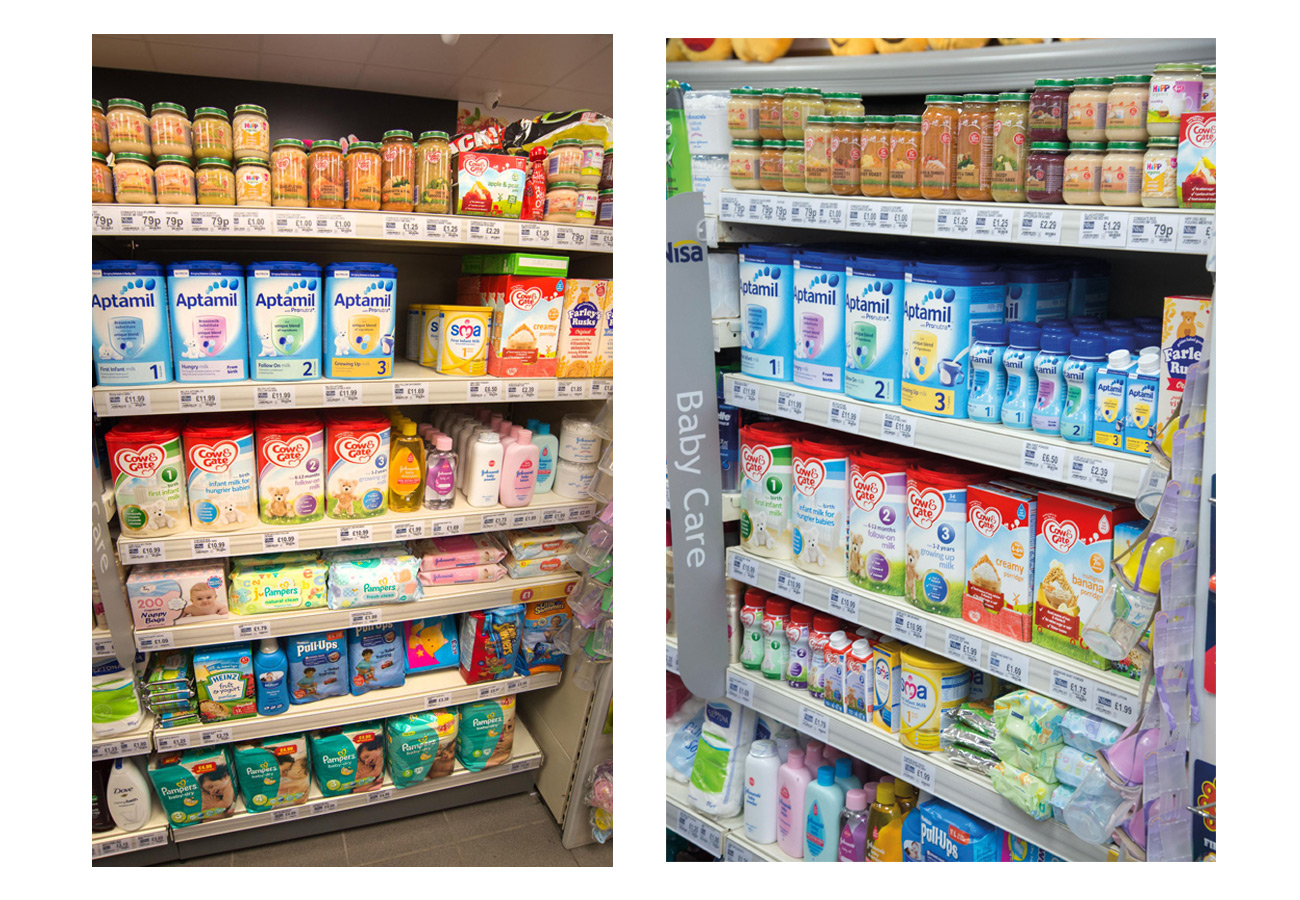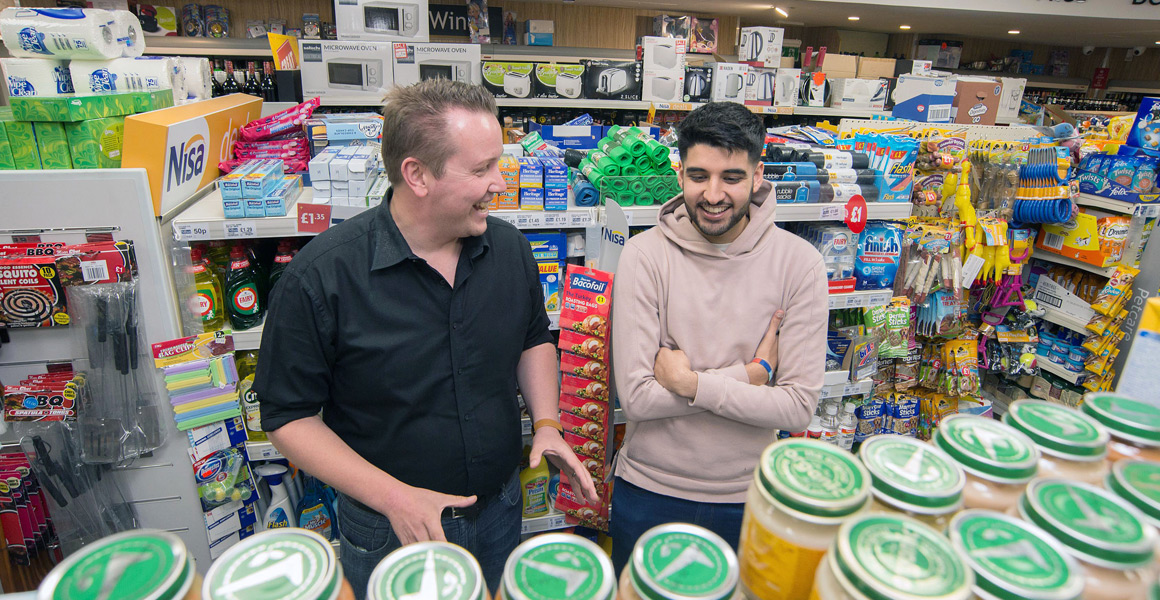This is part three of a three-part series. To see the second part, click here.
Danone Early Life Nutrition category expert Nathan Kulik rejoins two retailers to learn how changes to their baby food fixtures helped improve their sales over the past ten weeks.
Baby foods and formula milks are an item for one group of shoppers all year round. But are retailers stocking the full range of products, and displaying them in the best way to help maximise their sales?
We visited two retail stores with an expert from Danone ELN to see what advice he had for improving baby food sales. So, what were the results? Both stores reveal how they were helped.
Focus on
 Amrit Singh, H & Jodie’s Nisa Local, Walsall
Amrit Singh, H & Jodie’s Nisa Local, Walsall
Challenges
- Range: Baby food and milk was mixed in with other products such as nappies and wipes, making it difficult for shoppers to find what they wanted.
- Merchandising: Products were not consistently displayed by feeding age, so shoppers could potentially miss items they might otherwise consider buying.
- Brand blocking: Like-branded products were at times stocked in different parts of the display, making it harder for shoppers to search for products within a particular brand.
Changes to help drive sales
- Range: Separating out baby feeding products from other baby–related goods helps keep products in a logical order and allows shoppers to clearly see the core range.
- Merchandising: Products were reordered so the baby food display ranged by age & grouped age-targeted products together, once rearranged it was easy to spot and add in missing lines.
- Brand Blocking: Placing like-branded products together allows shoppers with preferred brands to shop efficiently, and ensures they do not miss any products in the range.
Amrit says
After the visit with Danone’s expert the trial has gone really well and we are certainly selling more. My customers prefer the range I am now stocking and it’s become a lot easier for them to follow after re-arranging the shelves to separate items by brand and age. Ready-made milks, which we didn’t have before, are now our main line as they suit our customers’ needs.
Key lessons for your store
1. Ensure baby foods are displayed separately from other baby-related, non-food items within the fixture.
2. Display products in order of baby feeding age to ensure no part of your range gets overlooked.
3. Arrange products by brand so that shoppers can easily shop the fixture and see the entire range on offer.
Before and after

Focus on
 Suki & Serge Khunkhun, Premier Woodcross Convenience Store, Coseley
Suki & Serge Khunkhun, Premier Woodcross Convenience Store, Coseley
Challenges:
- Display: Products were restricted to one narrow shelf, which meant larger products could not be clearly seen, as they had to be displayed on their side.
- Position: The baby food display was quite low down on the shelves, this made them easier to miss, and less accessible for mothers coming in to shop.
- Visibility: Due to the positioning of the baby products on low down shelves, it wasn’t obvious to shoppers that Suki stocked them, despite the display being near the till.
Changes to drive sales
- Display: After increasing available space by single spacing adjacent products, baby food could be displayed over 3 shelves with all cartons standing up clearly.
- Position: Elevating the display meant baby food products could be moved up to eye-level, which is a more visible and easily accessible location for mums.
- Visibility: Once the display was elevated, shoppers could easily spot the display and Suki could easily keep an eye on higher priced products at the same time.
Suki says
We’ve had to make do with a very small range on one shelf for ages, so it’s really good to provide a much wider choice. I’ve shown a few of the mothers who come here and they all like it. We didn’t have the Aptamil powdered milk at all before and that’s proved particularly popular, but the ready-made milks have also sold very well. The expert’s advice to move the baby food from the bottom shelf to eye level has been really positive.
Key lessons for your store
1. Keep your display large enough so that products can be merchandised correctly.
2. Ensure the products are sufficiently visible to shoppers by keeping them at eye level.
3. Increase shopper awareness and safeguard higher priced products by keeping the display near the till.
Before

After
DANONE ELN’S TIPS FOR YOUR STORE
1. Make sure you give a good amount of space to baby feeding categories
2. Stock a core range of milks and baby food
3. Try to position baby food products beside toiletries
4. Put your best sellers in the best position on the shelves
5. Brand-block items together to make it easier for shoppers
6. Try to display baby food near the till point

EXPERT ADVICE
NATHAN KULIK, Head of Strategic Growth Channels, Danone Early Life Nutrition
It is great to hear the results of what we recommended which helped the retailers to grow their sales. Amrit & Suki were very receptive and it’s very positive to have that kind of feedback.
Our mission is to bring health through food to as many people as possible. This shows that making simple changes can have a big impact.
Get involved
If you would like to take part in a similar project call 020 7689 0600 – option 3 or tweet @betterretailing to let us know!
For more category management advice from Danone, click here
IMPORTANT NOTICE: Breastfeeding is best for babies. Infant formula is suitable from birth when babies are not breastfed. Follow-on milk is only for babies over 6 months, as part of a mixed diet and should not be used as a breastmilk substitute before 6 months. We advise that all formula milks including the decision to start weaning should be made used on the advice of a doctor, midwife, health visitor, public health nurse, dietitian, pharmacist or other professional responsible for maternal and child care, based on baby’s individual needs.





Comments
This article doesn't have any comments yet, be the first!